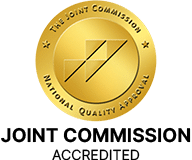A halfway house, also known as a sober living home or transitional housing, provides a structured and supportive living environment for individuals transitioning back into society after completing an addiction treatment program or incarceration. These homes offer a safe and stable space where residents can focus on their recovery and develop the skills necessary for independent living.
But who foots the bill for these essential services?
The cost of a halfway house is typically covered by residents themselves, but insurance, government programs, non-profits, or grants may help. Some facilities offer sliding scale fees or scholarships for those in need. Always check with the specific halfway house for payment options.

Table of Contents
Funding Sources for Halfway Houses
The funding landscape for halfway houses is diverse, often drawing from a combination of sources:
- Resident Fees: Many halfway houses charge residents a monthly fee to cover living expenses. This fee can vary depending on the location, amenities, and services provided.
- Government Funding: Government grants at the federal, state, and local levels play a significant role in supporting halfway houses. These grants may come from agencies focused on substance abuse treatment, mental health, or human services.
- Nonprofit Organizations: Numerous nonprofit organizations dedicate resources to halfway houses. These organizations may provide direct funding, in-kind donations, or volunteer support.
- Insurance Coverage: In some cases, health insurance plans may cover a portion of the costs associated with halfway house stays, particularly if the facility is considered a necessary step in the individual’s treatment plan. This coverage can vary significantly depending on the insurance provider and the specific policy.
Do Halfway Houses Provide Food?
Yes, most halfway houses provide basic food staples for their residents. This often includes access to a shared kitchen and pantry stocked with essential ingredients. Residents are typically responsible for preparing their own meals, which encourages self-sufficiency and life skills development. Some halfway houses may also offer communal meals or have arrangements with local food banks or meal programs.
The Importance of Halfway Houses in the Recovery Journey
Halfway houses play a vital role in the continuum of care for individuals recovering from substance abuse or mental health challenges. They bridge the gap between intensive inpatient treatment and independent living, offering a structured environment that supports ongoing recovery.
Key features of halfway houses often include:
- Sober Living Environment: Halfway houses maintain a strict zero-tolerance policy for drugs and alcohol, providing a safe and supportive environment for sustained sobriety.
- Structured Living: Residents typically follow house rules, including curfews and participation in house meetings, which promote accountability and structure.
- Peer Support: Living alongside others in recovery creates a sense of community and shared experience, fostering mutual support and encouragement.
- Life Skills Training: Many halfway houses offer programs to develop essential life skills, such as job training, budgeting, and communication, to prepare residents for independent living.
- Continued Treatment: Residents often continue their recovery journey through participation in outpatient treatment programs, 12-step meetings (like Alcoholics Anonymous), and individual therapy.

Choosing the Right Halfway House
When considering a halfway house, it’s essential to research different options and find a program that aligns with individual needs and recovery goals. Factors to consider include:
- Location: Proximity to support networks, employment opportunities, and transportation.
- Length of Stay: Understanding the expected duration of stay and any flexibility in the program.
- Cost and Payment Options: Clarifying the fees, payment options, and potential insurance coverage.
- Program Components: Evaluating the specific services offered, such as job training, mental health treatment, and life skills development.
- House Rules and Expectations: Understanding the rules and expectations to ensure compatibility with personal needs and preferences.
By carefully considering these factors and seeking guidance from treatment professionals and loved ones, individuals can find a halfway house that supports their successful transition to independent living and lasting recovery.
Conclusion
Halfway houses, also known as sober living facilities or recovery residences, provide a critical stepping stone for individuals transitioning from an addiction recovery program or incarceration to independent living. These sober homes offer structure and support for those recovering from substance use disorders (SUD), helping them maintain sobriety while integrating back into society.
While the costs of staying in a sober living house are often the responsibility of the residents, financial assistance may be available through healthcare programs, insurance companies, government grants, non-profits, or referrals from a treatment center. Some facilities offer aftercare support, including access to an outpatient program, drug testing, and ongoing counseling to reinforce long-term sobriety. Understanding the treatment options, funding sources, and the required amount of time for transitional living can make a significant difference in achieving long-term recovery.
For those seeking a stable, supportive environment to continue their addiction recovery, researching transitional living options thoroughly and exploring all available health services can help ensure a smooth transition to a healthier, more independent future.
Published on: 2025-01-30
Updated on: 2025-04-29



